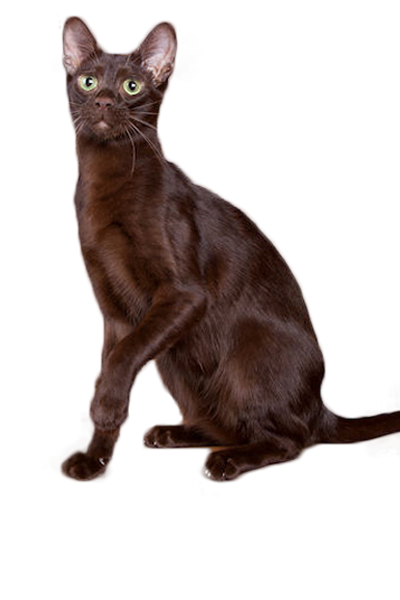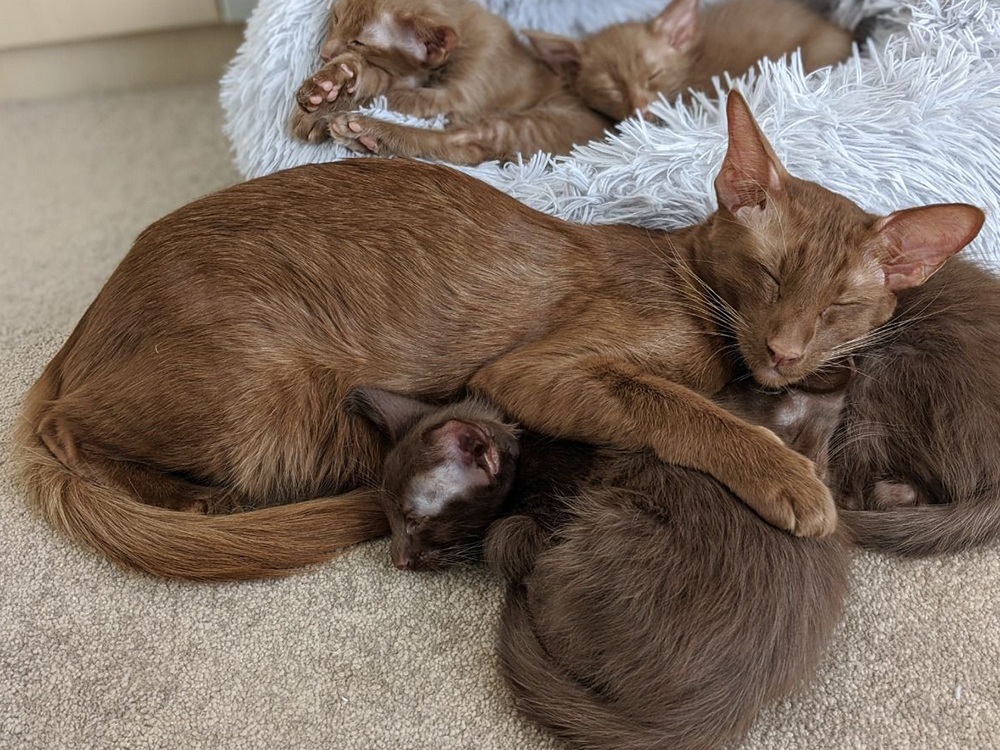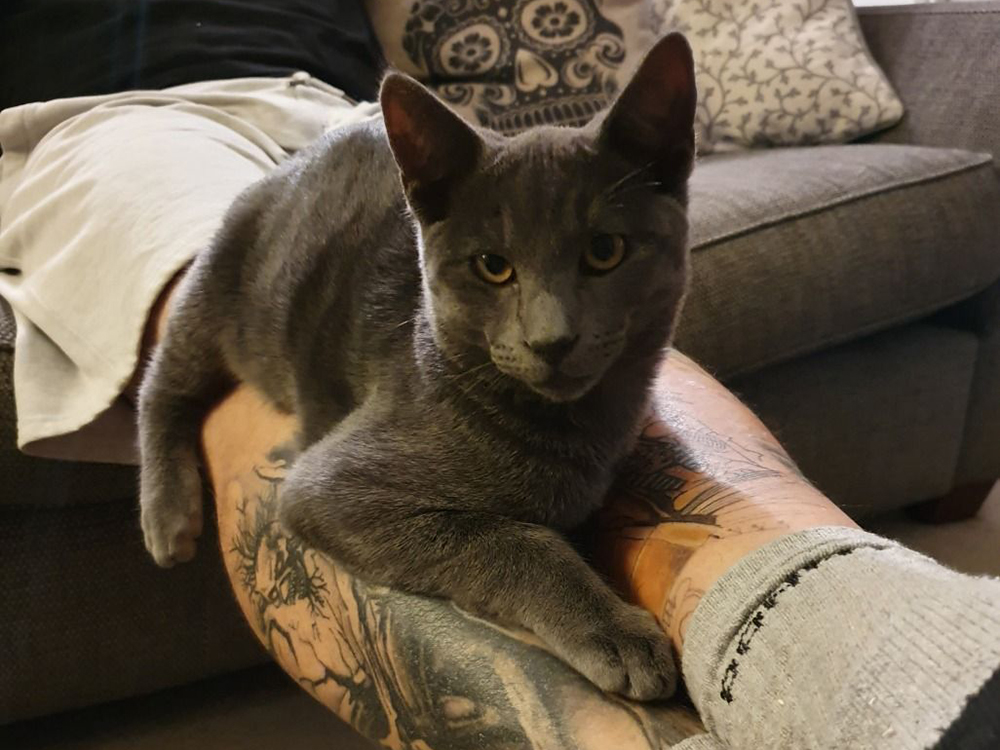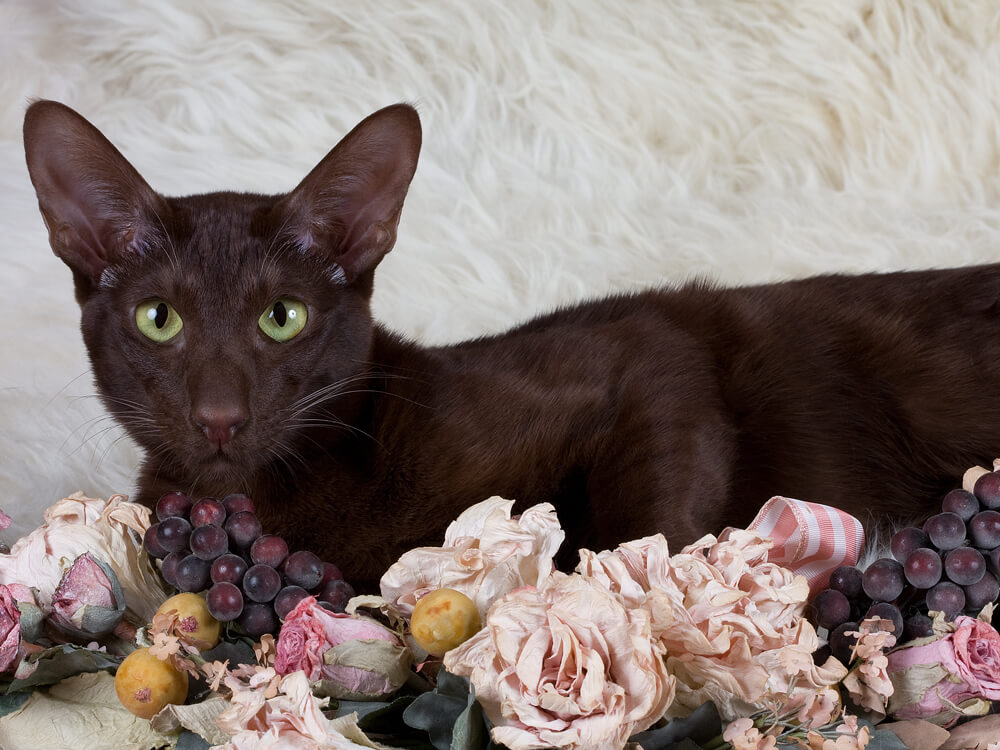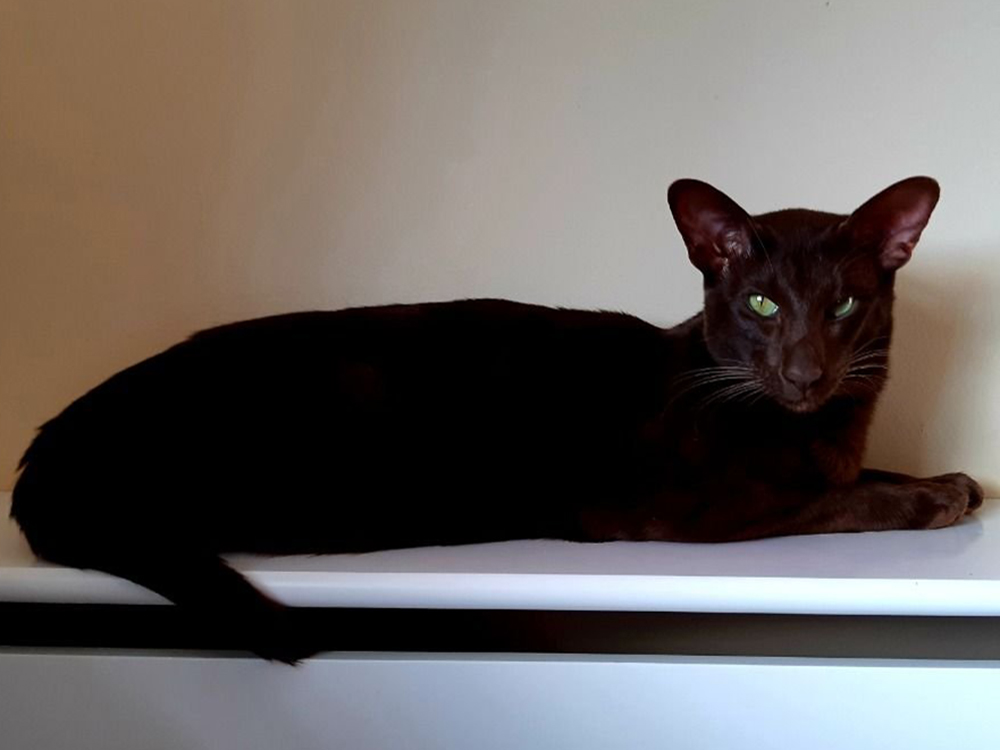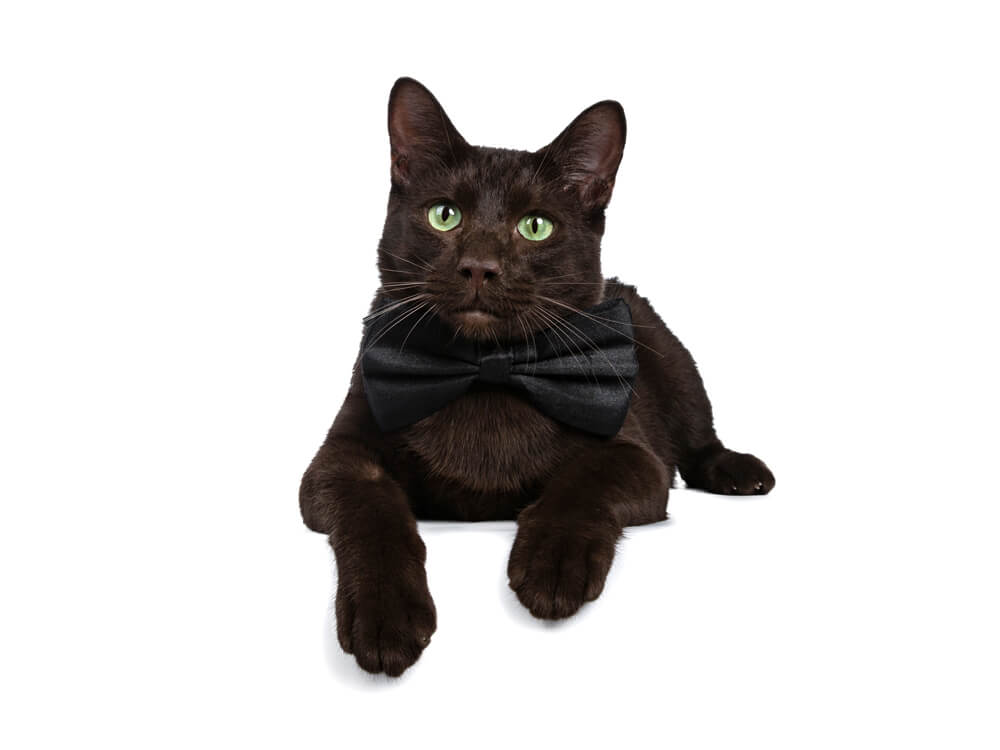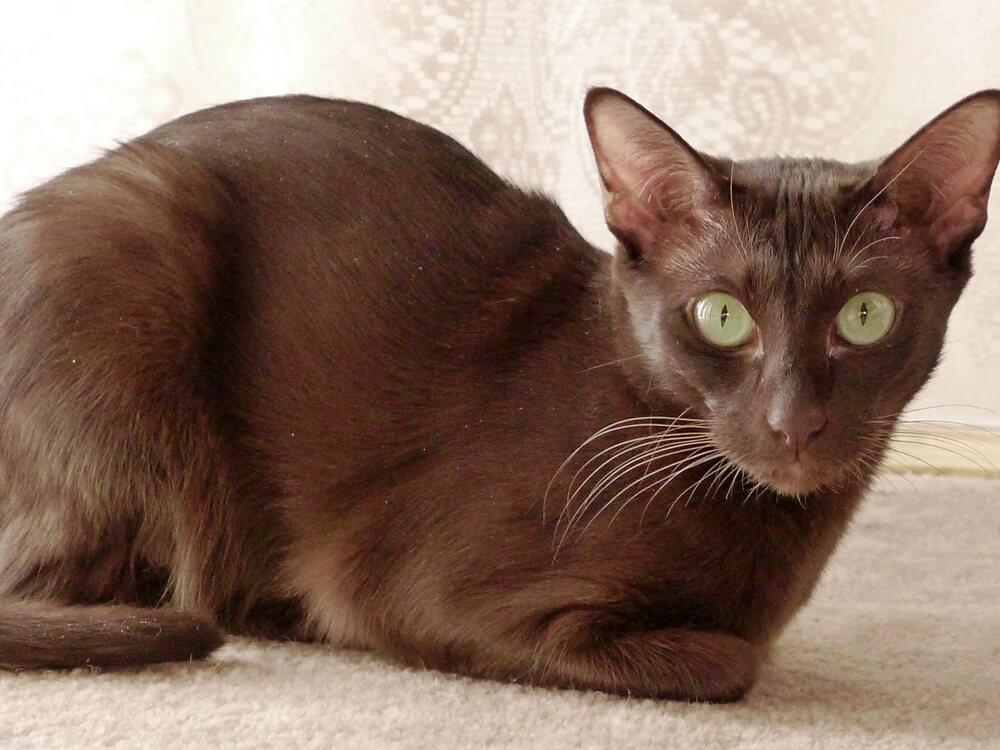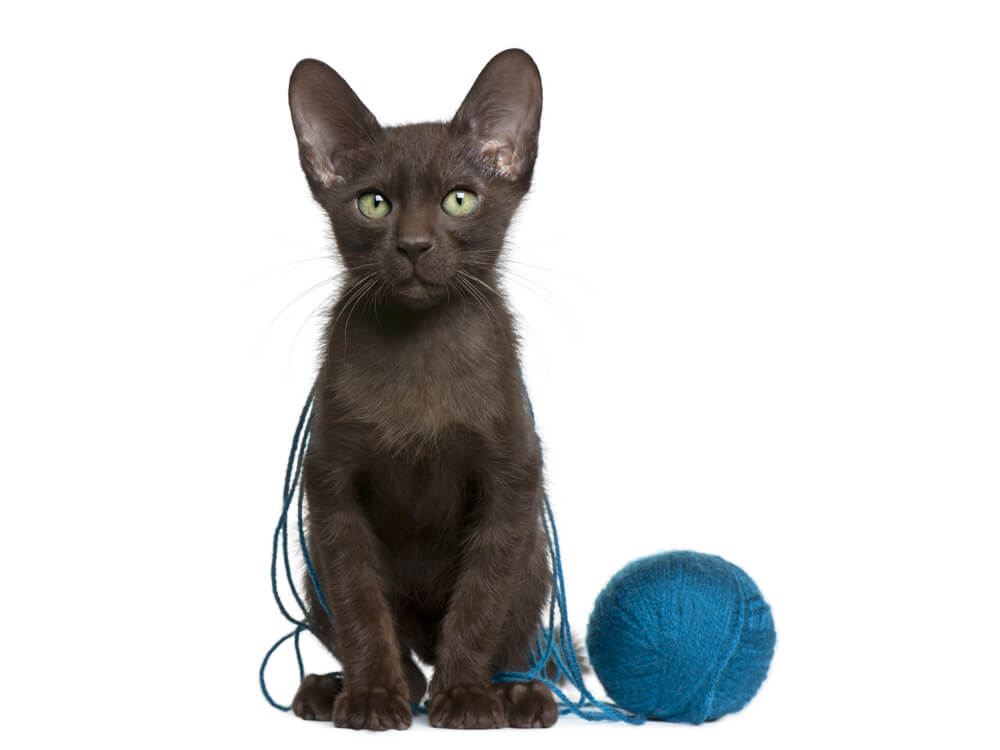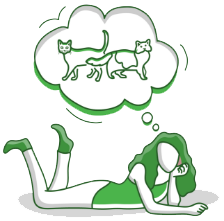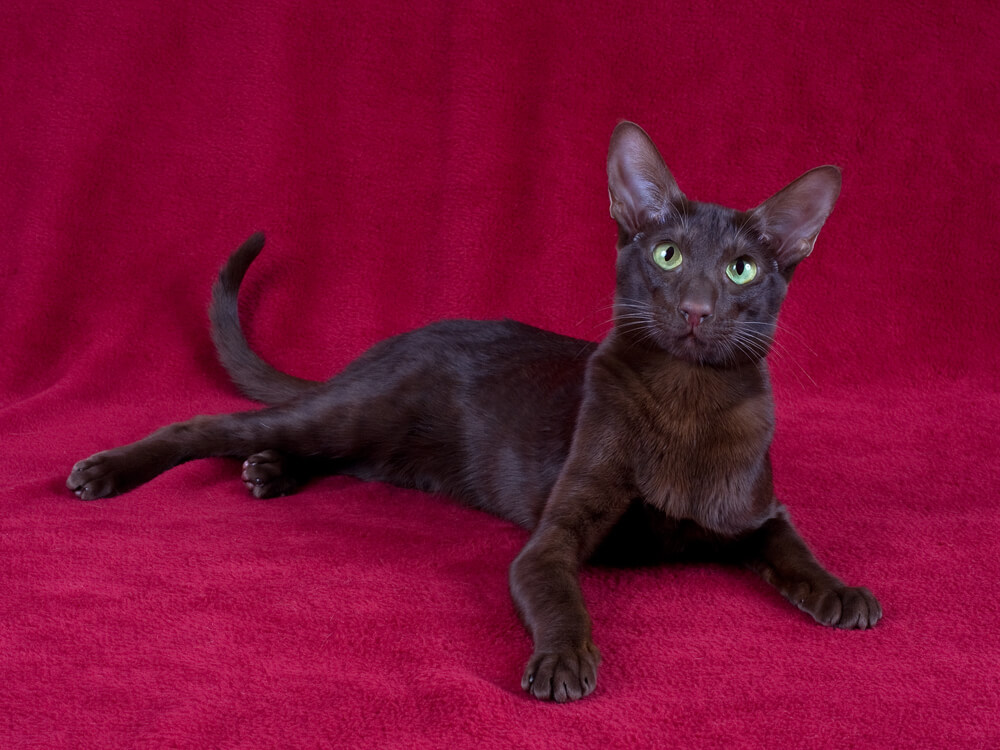
Havana Brown Breed Pictures
Vital Breed Stats
| Weight: | 3 - 5 kg M | 3 - 5 kg F |
| Life Expectancy: | 12 - 15 years |
Breed Characteristics
| Size: |  |
| Grooming: |  |
| Good with Children: |  |
| Good with other pets: |  |
| Affectionate: |  |
| Active Level: |  |
Give a thumbs up if you love the Havana Brown

0
More About the Breed
History
The Havana Brown cat was a work of inspiration to bring back the brown cats that existed in Siam, which is now called Thailand. Back in the late 1800s, travellers brought naturally all-brown cats to Great Britain. They gained popularity for a while but went missing from cat shows in the 1920s. Persistent breeders took interest and created a breed that would resemble a green-eyed, solid brown cat. It is an outcross amongst domestic shorthair cats, Siamese cats, and the Russian Blue cats.
In the mid-1950s, the breed was imported to North America and was called the American Havana Browns. However, in the UK, it did not have a large gene pool. As such, it went gene improvisation to achieve the goal. In 1998–1999, an outcrossing was permitted with unregistered black or blue domestic shorthairs, chocolate or seal point Siamese, and certain colours of Oriental shorthairs.
In the successive years, the Cat Fanciers’ Association and the GCCF recognised the Havana Brown cat, setting a breeding standard.
Appearance and Grooming
True to its name, Havana Brown, it is a chocolate brown cat breed with a medium length body. It can weigh from 6 to 10 lbs. The Havana Brown female cats have slim legs whilst the males having muscled legs. Hind legs are slightly longer than the front. It has a slender medium-length tail.
Its eyes are oval-shaped and are also medium-sized with the colour of vivid emerald green or any shade of green. The ears are large and cupped at the base with rounded tips. One of its distinctive features is its head as it is longer compared to other breeds, with whiskers complementing its coat colour.
The Havana’s coat is single and is of short to medium length, appearing very smooth. Its coat colour is rich chocolate throughout that can be red-brown (mahogany), or any shade with chestnut brown tone.
Further, grooming of this breed is easy as it sheds lightly. A weekly brushing would suffice. Follow basic grooming such as regular nail trimming, teeth brushing, and ear cleaning. The earlier these grooming routines are introduced, the better.
Temperament and Intelligence
The Havana Brown cat is truly incomparable from other breeds, with its unique appearance and remarkable temperament. Whilst most cats largely rely on their sense of smell, a Havana Brown cat explores its surroundings with its paws. It investigates the environment by smelling, touching, and feeling. Even interacting with its owners involves a lot of paw touching. As it is very affectionate, reaching for its owners with their paws is a common behaviour.
This feline has doglike traits. It is very inquisitive that it would rush and investigate when it hears any noise. It forms a strong bond with its owners and would happily follow them around the house. The good thing is that they adapt well when kept as an indoor pet. However, it is better for this feline to have a company. This feline tends to attach itself to just one owner for life.
Puzzles and interactive toys are amongst its favourite games as this feline is highly intelligent. Challenge its brain by teaching it tricks, “fetch,” and giving rewards during playtime. Another favourite pastime is napping. This feline makes a good choice if you are looking for a sleeping partner.
It is a good choice for a family pet as well. It is sensitive when to make its exit when being handled by toddlers. In addition, it is known to use more of its paws rather than claws when wriggling out of a child’s hold. However, supervision is still a must during playtime with children.
Nutrition and Feeding
The Havana Brown cat should be provided with a nutritious diet that fulfils its nutritional needs. It should be consistently given the same food following the same feeding schedule. If there are changes to its diet, those must be done gradually to prevent digestive problems.
The serving portions should depend on the cat’s weight, age, and activity level. Its diet must include at least 25 per cent protein and just 5 per cent carbohydrates.
Health and Exercise
On average, the lifespan of a Havana Brown ranges from 12 to 15 years. This cat breed is amongst the healthiest and is not known to be affected by hereditary health. It is wise to acquire this breed from a breeder who ensures that the cat is tested for any potential health condition.
Further, ensure that this feline gets enough exercise and its diet managed well to prevent it from becoming overweight. Being an intelligent breed, it should be provided with toys and activities that will also challenge its mental abilities.
Cost of Ownership
A pedigreed Havana Brown kitten will cost £300 upwards. Average insurance expenses would cost £16 (basic) to £25 (lifetime) monthly. Food costs may range from £15–£20 each month. For vaccinations, boosters, annual checks, and other veterinary costs, pet care costs may add up to more than £600 each year.
On average, a Havana Brown cat owner will spend about £40–£60 per month. The insurance costs can also affect this estimate. For its entire lifetime (12–15 years), the expenses can be as low as £5,800 to as high as £10,800. This estimate does not include the initial costs incurred in acquiring this cat.
Is a Havana Brown Right for You?
- It is sociable and people-oriented.
- It sheds lightly, thus it is easy to groom.
- It is expressive and likes to talk with its family in a gentle voice.
- It is a rare breed with distinctive features.
